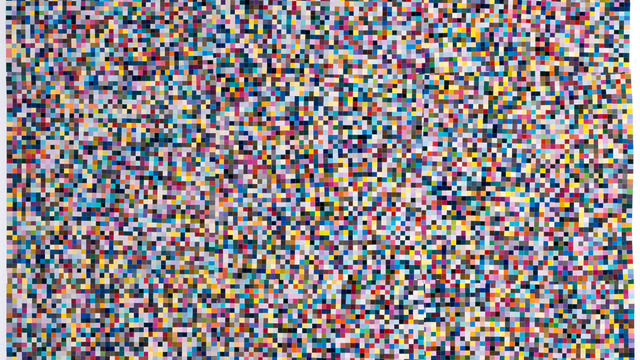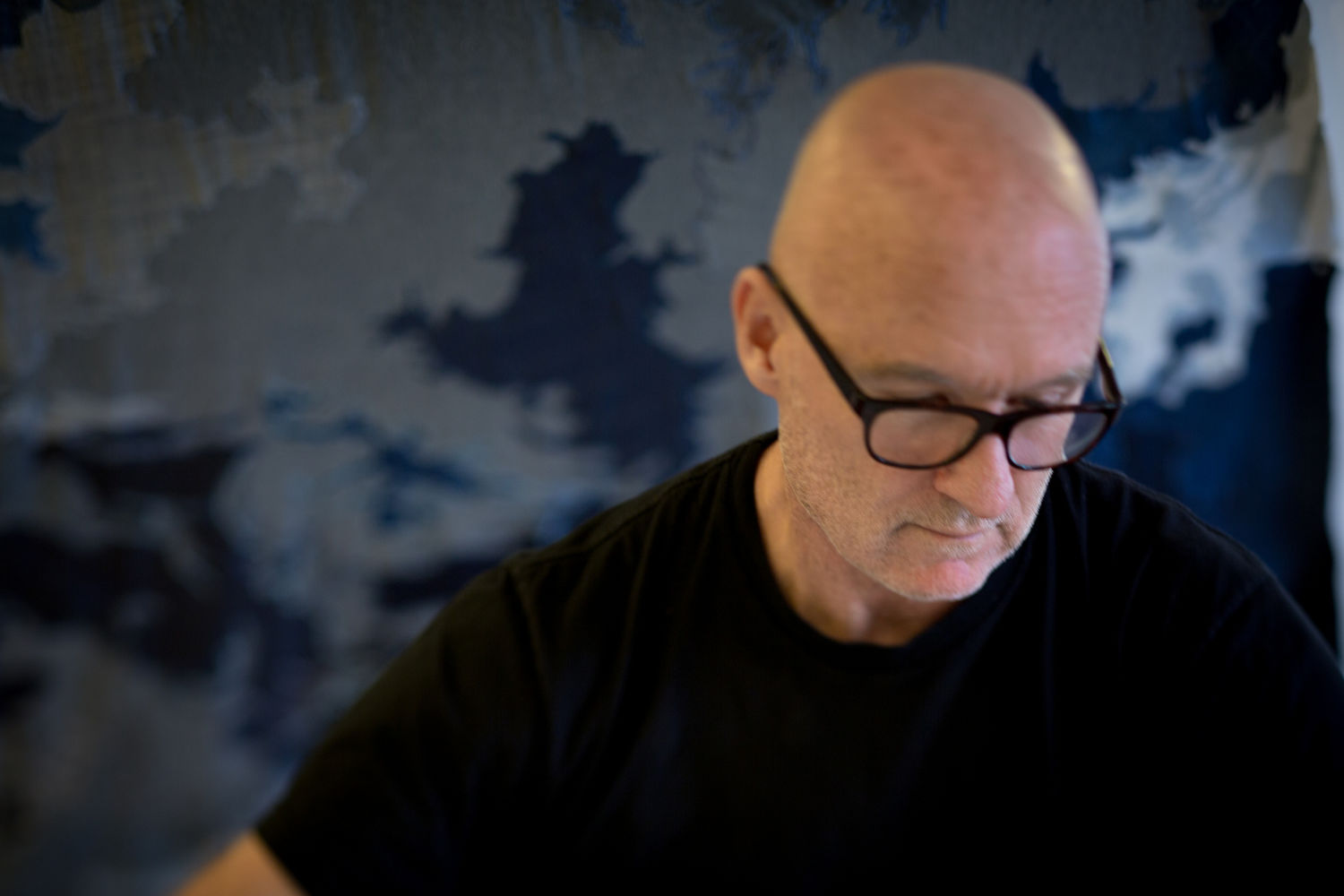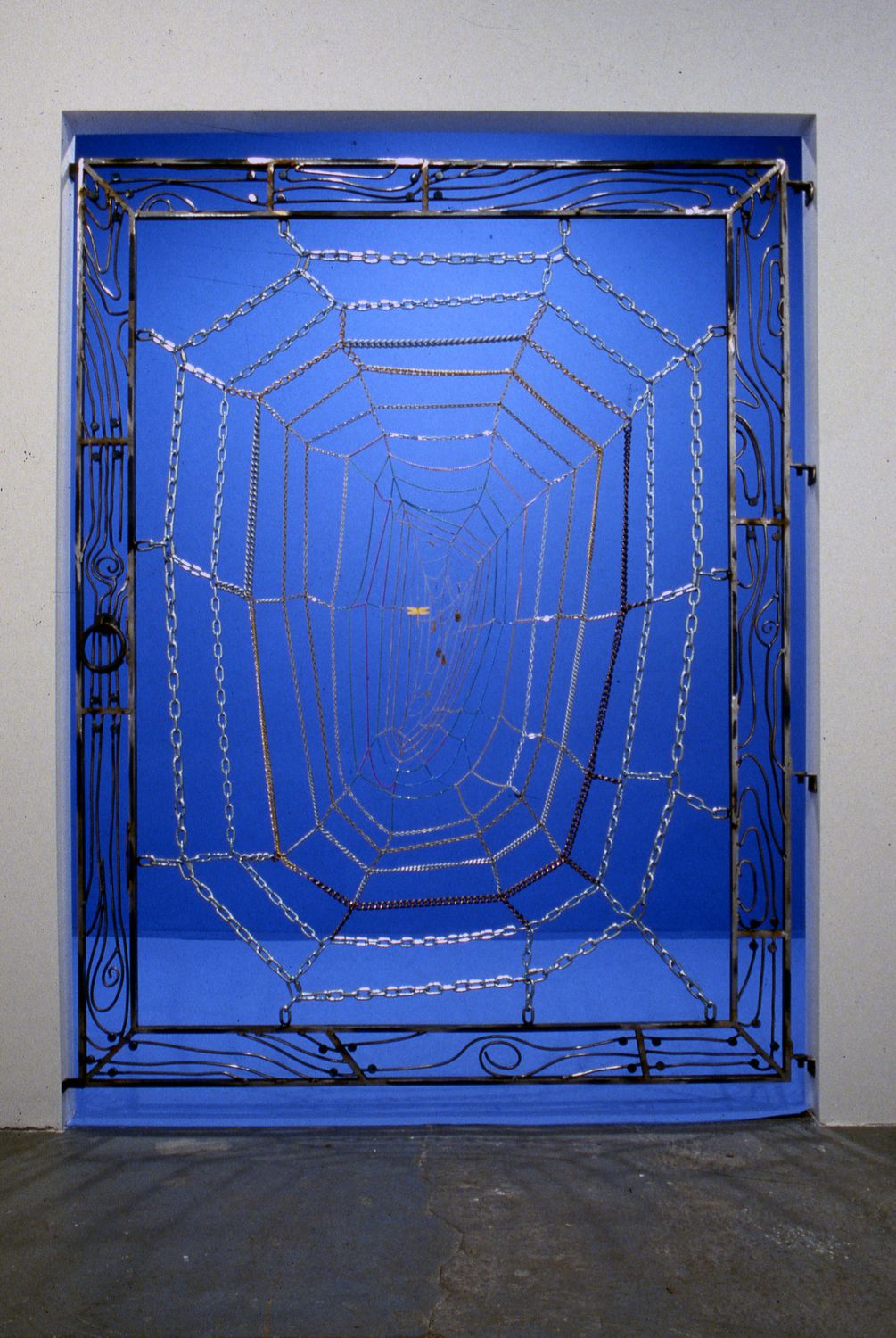
Choreographing Experiences in Space: Olga Viso Interviews Jim Hodges, Part 2

On India
Olga Viso
After you traveled to India for the first time, in early 2011, you shared how affirming it was to be in a place where many of your own perspectives—in terms of how you look at the world, the lens through which you see and experience life, and make art—were echoed.
Jim Hodges
I felt so supported there, as if I had been in India all my life. I came to realize that I have been involved with and engaged in a kind of sensitivity, in a kind of attention to my world that felt parallel to what I experienced in India. Being there allowed me to reconnect with my thoughts and my practice, from which I had become detached. In New York I didn’t have that place of remove, that ability to step back from myself, that I had in India. There, I was thrown into the midst of a complex reality that I had never experienced, and my ways of thinking were being questioned. I liked this complexity and these questions that the place relentlessly raised.
Viso
What, specifically, was called into question?
Hodges
The mirror that India held up to me demanded me to reevaluate so many things, starting from very simple things like crossing the street to more complicated issues, such as my relationship to currency and money and power. Deeper still were reflections on permanence and impermanence, creation, death and life, and undamental beliefs and spirituality. There is this spectrum of experience there, from the mundane to the very heavy.
Viso
What happened when you returned?
Hodges
If you think of a fan that opens up and moves from one fold to another in three dimensions, this is what India offered. And then it expands again, to reveal even more dimensions. Throw all that into a fun-house mirror and then you’re getting an idea of how India, as memory, resonates in me. Because everything there is more complicated than you think. You believe you have grasped it but then, all of a sudden, it all just crumbles, and you find yourself coming to from a daydream next to a cow or a goat that’s foraging through garbage lining the street, that’s being shared with children playing and digging around in it, just steps from the spot where their mother is stirring a pot of something cooking. This all takes place within feet of a very busy, dusty street with cars, bicycles, and tuctucs buzzing by.
What I found in India was an immediacy that I have always been attracted to—a place where beauty is revealed in a kind of degradation … in proximity to degradation. Beauty is not isolated or contained. Its function and visibility are reliant on a context there that is really “full.” What’s dictated to me from India is the removal of judgment and hierarchy. Good/bad, right/wrong, and life/death—all of these things start dissolving.
After six weeks of traveling there, I returned to New York and remained in the dream of India for some time. Travel is like that. If you don’t resist, you become a place, and that place is with you when you return home.
Viso
As I listen to you describe your experience there, I can’t help visualizing your artworks. The way you describe the fan as it folds and unfolds and opens up again in surprising ways conjures for me specific drawings that you have made. I can see it all so clearly. On the surface, things appear one way and then another, filled with myriad layers and nuances.
Hodges
I thought about Vincent van Gogh a lot when I was in India. I thought he would have been in absolute heaven there, in a place where color is so profoundly celebrated. I was especially drawn to the flags that fly in temples. I asked a driver as we traveled through Rajasthan, “What do those colored flags mean over the temples?” His response was, “God loves color!” “Of course,” I thought. He explained how different aspects of God, and different gods, were expressed through different colors. How red, for instance, was the color of Hanuman, the monkey god, and that when people petitioned a god for help, they would fly a colored flag in thanks to the god for prayers answered.
Viso
Has the use of color in your work been a source of empowerment?
Hodges
I don’t know that it is that specific. I don’t think so. Growing up a Catholic kid out in Spokane, I do remember the symbolic use of purple, for instance, and its association with Easter. I recall the power of black and white and growing up with certain ideas of blue and pink in that irritating binary in which we were reared. These are things I thought about when I was first starting to make art: thinking about the conventions of color, embracing some of those conventions, and also playing with them, challenging them in myself, and denying them too.
But I also knew that there is a tradition that is older than my understanding of things. Before there was language to describe what we see, we experienced it. Slowly, from experience, we began to name things. “Blue,” for example, takes on something that I believe is so very old in us. When I was in India, I was struck by the flexibility and expansiveness of imagination there. To this day, Hindus are still inventing gods. There’s still the possibility for a new god to be found somewhere. That, in and of itself, was wonderful for me to observe and experience. It has helped me in my own life, in my daily life, to recognize God in all of it, and not just in the nice parts.
Viso
This may be a dangerous question, but you have introduced the notion of God several times in our conversation. Is God, or the manifestation of a god, or however anyone defines God, important to you? Is God manifest in your work?
Hodges
As a topic for conversation, I think it’s interesting. My relationship to the idea of God has been an ongoing evolution. At times, it has felt natural and a part of what I am engaged in, but I don’t engage it specifically as a subject in my work. I have, for a number of years, wondered about creativity, about ideas and philosophy, and what it means to “name” things and where ideas come from. I do have a natural faith and a belief that art is a powerful energy for social change, having potential for creating an opportunity for radical social change. And I attribute this awesome power to a functioning system and expression of human inventiveness that is always restless and longing for something beyond itself … this, for me, comes close to spiritual ideas that I could associate with my fluid concept of “god.” But I am not attracted to formal dogmatic systems that prescribe definitions and impose rules for belief in or worship of something I think of as boundlessly unknowable and beyond actually understanding; so in this way, because the ideas generate imaginative thought, it, the notion of god itself, becomes creative and mirrors an art process, completing a circle.
My hesitation in sharing these thoughts is a complicated response and repulsion to “religion” and so I have a hard time locating the context to cast these ideas. I suppose I think of the experience that I call “art” as a condition I associate with the “divine.” As a little kid, as an altar boy, I was attracted to the rituals of the Mass, the entire theater and drama of the Catholic ceremonies, and to all the mythologies and stories. I was raised in that and found myself there naturally. It sparked my imagination and allowed me a place to deposit my ideas and fantasies, and it gave rise to my earliest erotic thoughts. And my ideas developed from there.
I think that I have always had some relationship to God, either as a concept or as something out there or something in here. What I found exciting in India was being in a place where it was very natural to comment on God in a way that felt free of judgment … simply and in a matter-of-fact way. Here I tend to keep these thoughts to myself and I don’t feel the availability of a context that would encourage such dialogue, though clearly there are the thoughts.
Viso
It’s a natural part of people’s consciousness and day-to-day existence in India?
Hodges
So much so. Everywhere. I think there have been times when I have looked for what I might call a spiritual entry point into my art making … or I have looked for a spiritual solution to a difficult personal problem. Or I’ve looked for some kind of spiritual something, or philosophy in my life as a way to keep me moving or as a place to rest. So I think it’s always been a part of my practice, though, like the tide, ebbing and flowing. I certainly don’t single out spiritual aspects of my dimensional practice nor do I ever want to limit what I do to single concepts or defining attributes … I don’t want to “conclude.”

On Naming
Viso
The fragile proximities between life and death, beauty and degradation, that you experienced in India have always been potent themes in your art. In a view from in here they take surprisingly literal form in the presence of the black widow spider.
Hodges
The presence of literal (or symbolic) death is something that has always been part of my work, although perhaps not as overt, or maybe as literary, as it is here, with the depiction of the bird’s nest and the spider. That was an important gesture for me because I am effectively “naming it.” Naming it is what was important to me in this particular piece, although I am never usually that transparent. In my practice I move close to articulation and then far away from it. I move from what could be blindness to precision and back to blindness again.
Viso
Was it liberating for you to name death so specifically in this instance?
Hodges
I think the literal inclusion—the naming and the depiction of implied death in the form of the black widow—was important for me at that time. But it is not just death that is present there. There’s also disappearance and emptiness that point to other conclusions or suggest other possibilities. There’s a whole other thing going on in the outside part of the work. Death is just hanging out while the blank, empty openness of the work expands …
Viso
But “death” is not immediately apparent. I remember the first time I saw a view from in here and the shock of discovering the spider looming below. I was transported to childhood again. I felt confused and vulnerable. You could have named the sculpture Death, but you didn’t. The work’s title, a view from in here, allows for a range of possible meanings. With your titles, you often set up circumstances that allow multiple points of entry.
Hodges
I have, in the past, loved titling things. I think titles are part of the work. I don’t always hit them right, but sometimes I get a title that feels like it is the right entry point or the right jumping-off point, or even the right ending. I know that titles, and the language of a wall text or a label, are part of the route people will take in approaching a work—to see, to understand, to know, and to enter a work. And with sculpture, titles are one more way of rendering; they add one more dimension, hopefully.
This last year, I’ve entered into a postnaming period. I am not sure how long it’s going to last, but titles seem suspicious to me recently. I am reevaluating my relationship and commitment to them.
Viso
Your titles are often invitations; they offer “a view from in here” or invite one “this way in,” for example.
Hodges
Yes, they have been that. I guess it’s been important to me to recognize the partnering that goes on in the experience of art. It is an engagement between things, between people and something. At times I’ve wanted to celebrate that engagement with the language that I chose. And other times I’ve simply wanted to elicit a particular mood or an ambience. Words can be applied as one might put on a scent, such as perfume. Some scents are so wonderful and others are sickening … titles can be the same.
Viso
The titles add dimension, create a mood; would you say they heighten the experience?
Hodges
Not always. Sometimes they just fall flat. Language is also a record of things as they are. Titles are records of thoughts, records of what I am thinking about over time. Works that are failures still hold a record of importance. So even something that no one would ever want to look at, or that I may never want to show people, is still an essential thing.
Viso
So you title even those works that you consider unsuccessful?
Hodges
If I keep something, then I’m committing to it, and if survival is success, then nothing that is kept is unsuccessful.
Viso
Do the titles ever come first? Or do they come in the making or even follow?
Hodges
They come about in all those ways. There is no one path. I’m open to the potential of the possibilities of how things arise in me. Language is associative, as in our conversation. One thing leads to another. Often a title, such as ghost, was there from the beginning. The title suggested something I knew I needed to make. The word had an impact on the way the work ultimately manifested itself, and what it became. As a word, “ghost” has complex slipperiness and ambiguity and cartoony cultural implications that I like. It also holds aspects of the possible and impossible. I like it when my work takes me to an edge of my perception or to an edge of my understanding of something. A work usually leaves me far behind, as it comes to completion. It becomes “itself,” and an estrangement begins to take over what was, in the beginning, a relationship.

On Making
Viso
I know you think of yourself as a maker of objects, but I’ve always had a relationship with your work that is much more experiential.
Hodges
I would like to believe this is true. I am interested in experience, fully.
Viso
Throughout our conversations, you have spoken repeatedly about what your works “dictate.” What are they dictating to you now?
Hodges
I am a dedicated servant to art, a devoted servant. I will do what art wants. That is part of what art asks of me: to be engaged physically with an experience. This is what I wish to continue to develop. In this way, the work becomes that which you experience too. There is something that is going on, right now, in my work. I am at this new place for myself.
Viso
Can you put words on it?
Hodges
I’d rather make it and show you when it gets here.




